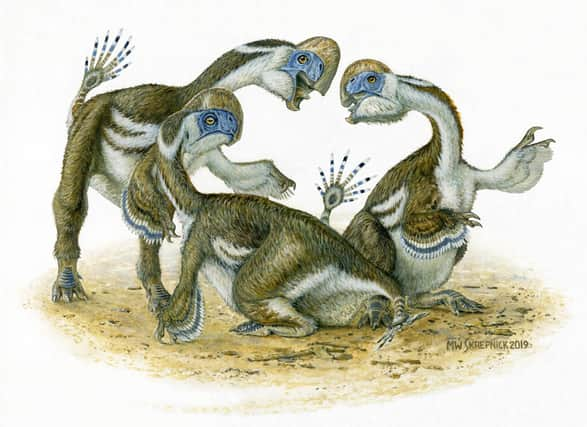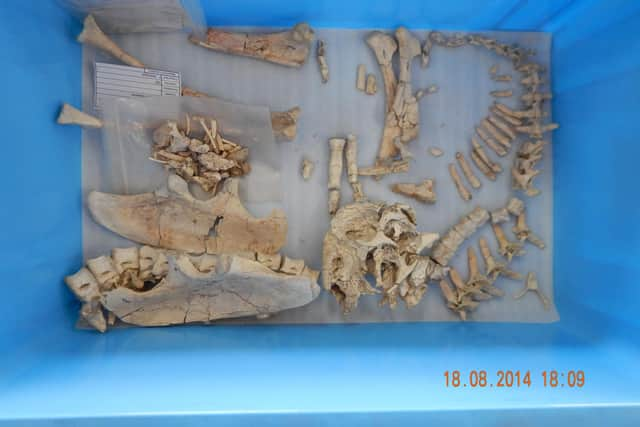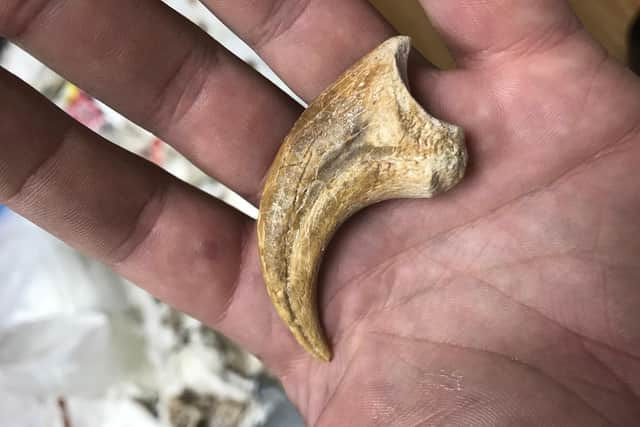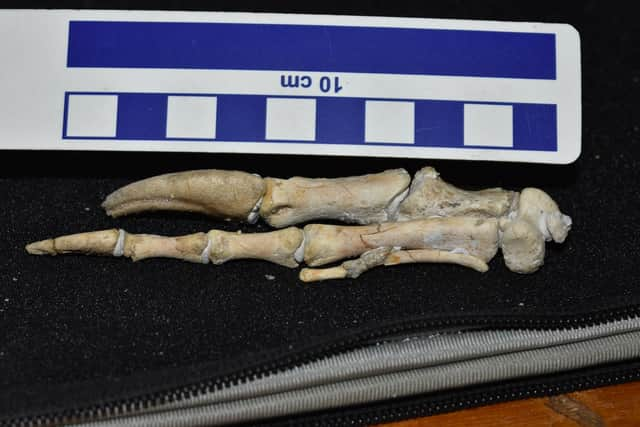Edinburgh University experts identify dinosaur with two fingers but no teeth


The unusual species had one less finger on each forearm than its close relatives, suggesting an adaptability which enabled the animals to spread during the Late Cretaceous Period, researchers say.
Multiple complete skeletons of the new species were unearthed in the Gobi Desert in Mongolia by a team of experts led by staff from Edinburgh University.
Advertisement
Hide AdAdvertisement
Hide AdNamed Oksoko avarsan, the feathered, omnivorous creatures grew to around two metres long and had only two functional digits on each forearm. The animals had a large, toothless beak similar to the type seen in species of parrot today.


The remarkably well-preserved fossils provided the first evidence of digit loss in the three-fingered family of dinosaurs known as oviraptors.
The discovery that they could evolve forelimb adaptations suggests the group could alter their diets and lifestyles, and enabled them to diversify and multiply, the team says.
Oviraptors’ arms and hands evolved as they migrated to new geographic areas – specifically to what is now North America and the Gobi Desert.
Advertisement
Hide AdAdvertisement
Hide AdThe team also discovered that Oksoko avarsan – like many other prehistoric species – were social as juveniles. The fossil remains of four young dinosaurs were preserved resting together.


The study, published in the journal Royal Society Open Science, was funded by The Royal Society and the Natural Sciences and Engineering Council of Canada. It also involved researchers from the University of Alberta and Philip J. Currie Dinosaur Museum in Canada, Hokkaido University in Japan, and the Mongolian Academy of Sciences.
Dr Gregory Funston, of the University of Edinburgh’s School of GeoSciences, who led the study, said: “Oksoko avarsan is interesting because the skeletons are very complete and the way they were preserved resting together shows that juveniles roamed together in groups. But more importantly, its two-fingered hand prompted us to look at the way the hand and forelimb changed throughout the evolution of oviraptors—which hadn’t been studied before."
He added: “This revealed some unexpected trends that are a key piece in the puzzle of why oviraptors were so diverse before the extinction that killed the dinosaurs.”
A message from the Editor:


Thank you for reading this story on our website. While I have your attention, I also have an important request to make of you.
The dramatic events of 2020 are having a major impact on many of our advertisers - and consequently the revenue we receive. We are now more reliant than ever on you taking out a digital subscription to support our journalism.
Subscribe to the Edinburgh Evening News online and enjoy unlimited access to trusted, fact-checked news and sport from Edinburgh and the Lothians. Visit https://www.edinburghnews.scotsman.com/subscriptions now to sign up.
By supporting us, we are able to support you in providing trusted, fact-checked content for this website.
Joy Yates
Comment Guidelines
National World encourages reader discussion on our stories. User feedback, insights and back-and-forth exchanges add a rich layer of context to reporting. Please review our Community Guidelines before commenting.